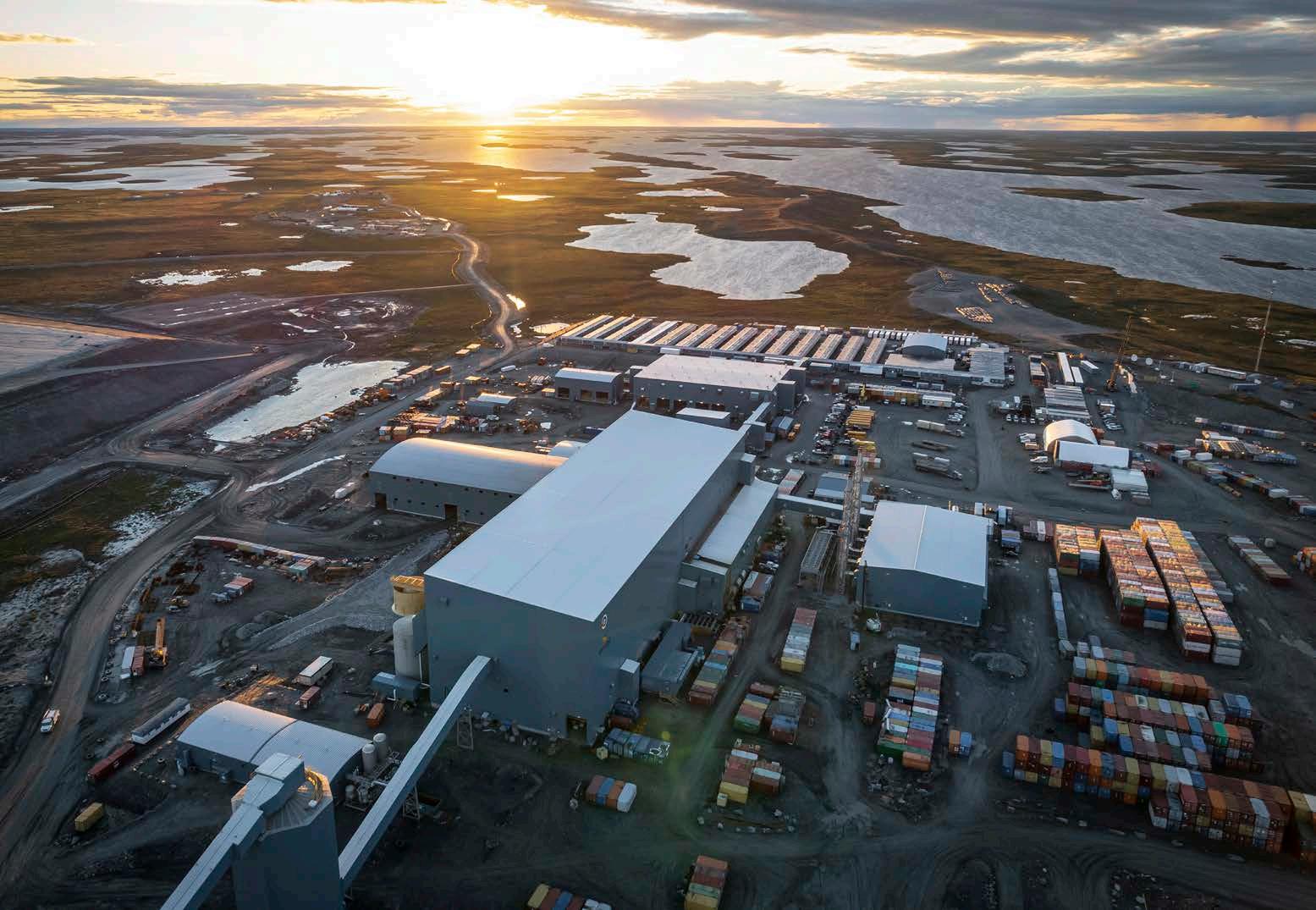
3 minute read
Growing government and falling private sector an issue for both territories
By Derek Neary Northern News Services
Economic recovery and growth coming out of the Covid-19 pandemic has been uneven in Nunavut and the Northwest Territories.
On May 1, 2023, Statistics Canada released data indicating that economic activity surpassed 2019 levels for all provinces and territories except for three. One of them was the NWT.
In 2022, the NWT economy grew by 1.5 per cent, a far slower rate than the 4.8 per cent growth of 2021. Nunavut was only a hair better at 1.6 per cent in 2022, but that marked an even greater contraction from a red-hot 7.9 per cent gross domestic product (GDP) growth during the pandemic in 2021.
The NWT’s GDP in 2022 totalled $4.4 billion while Nunavut’s came in at $3.5 billion. Both territories exceeded Yukon’s $3 billion. Mining accounts for close to 41 per cent of Nunavut’s GDP. Sitting in second place is public administration at 18.25 per cent, according to Statistics Canada. The Government of Nunavut estimates that the public sector will account for just over 29 per cent of all goods and services produced in 2023.
“Government looms large in the Nunavut economy, not only because of the high cost of providing public services in the Far North, but also because the territory’s private sector is typically quite small,” the GN states in its
2023-24
Budget Indicators report.
Mining is the giant within the private sector.
The value of mining production in Nunavut has risen steadily over the past decade. In 2021, the output from gold and iron ore was worth $2.5 billion. In 2012, by comparison, the territory’s metal production sat at $614 million, according to Natural Resources Canada. Nunavut’s economic prospects remains tied to both the territory’s “vast mineral potential — and its accompanying dependence on global commodity prices” and on workforce education and skill development,” the Government of Nunavut states in its 2023-24 Budget Indicators report. “Continued investment in crucial infrastructure will also enhance the territory’s economic potential.”
Fishing, which Premier P.J. Akeegok has often mentioned as having growth potential within the “blue economy,” represents less than one per cent of Nunavut’s GDP.
A shrinking economy
In the Northwest Territories, the economy in 2023 is almost nine per cent smaller than it was in 2019, prior to the pandemic.
The GNWT blames this primarily on “low investment” and “a significant drop in exports,” namely diamonds. Mining has fallen to 22 per cent of the territory’s nominal GDP. NWT diamond production peaked at $2.1 billion in value in 2017 and fell to $1.5 billion in 2021. Although mining is still the top industry in the territory, it’s shrinking. Public admin- istration, at 19 per cent, is gaining ground. Using real GDP, which accounts for inflation, as another measure, public administration actually overtook mining, 21 per cent to 18 per cent in 2021.
The territorial government is forecasting a 2.9 per cent reduction in GDP in 2023-24. This decline is attributed to less Covid-19 pandemic support spending by the government and falling diamond production.
“Outsized reliance on (government and mining) creates structural barriers to long-term growth and stability by making the economy inefficient and uncompetitive. This is the primary downside risk to the long-term outlook of the NWT economy,” the GNWT states in its 2023-24 Economic Review. “Despite many attempts over the years to stimulate economic growth in other industries, the NWT economy has failed to diversify.”
High inflation and rising interest rates are also having a dampening effect. The consumer price index in Yellowknife rose by an estimated 6.8 per cent in 2022 after a 2.2 per cent jump in 2021. The GNWT is projecting inflation to be 3.3 per cent higher in 2023.
The territorial government also acknowledges the extremely tight labour market in the NWT and its influence on the workforce as the largest and growing employer in the territory with close to 6,500 workers. It notes that public sector compensation is often too much for small and medium businesses to compete with and “this may be worsening staff shortages in the private sector.”
And yet many residents and organizations rely heavily on government support. The GNWT is projecting just over $1 billion in grants and contributions in 2023-24.
In 2021-22, the GN awarded approximately $511.4 million in grants and contributions, an increase of approximately $17.7 million over 2020-21.
Debt ceilings
In terms of how much breathing room the territorial governments have, the GNWT has borrowed close to $1.5 billion, putting it perilously close to the $1.8 billion debt ceiling that the federal government has imposed.
Nunavut has more flexibility. As of Oct. 31, 2022, the territorial government was at $398 million owing with a cap of $750 million, meaning $352 million remained.
Where the revenues will come from to repay those debts remains a pressing question. Nunavut is looking forward to a fifth mine opening in 2025 while the NWT has long been staring at the prospect of one of its large diamond mines (Diavik) shutting down in 2026, now extended one year from 2025.
Even there, the GNWT is forecasting $56.9 million in royalties from minerals and oil and gas royalties in 2023-24. It would take many years to pay off $1.5 billion in debt from that alone.
The answers aren’t coming quickly or easily.










